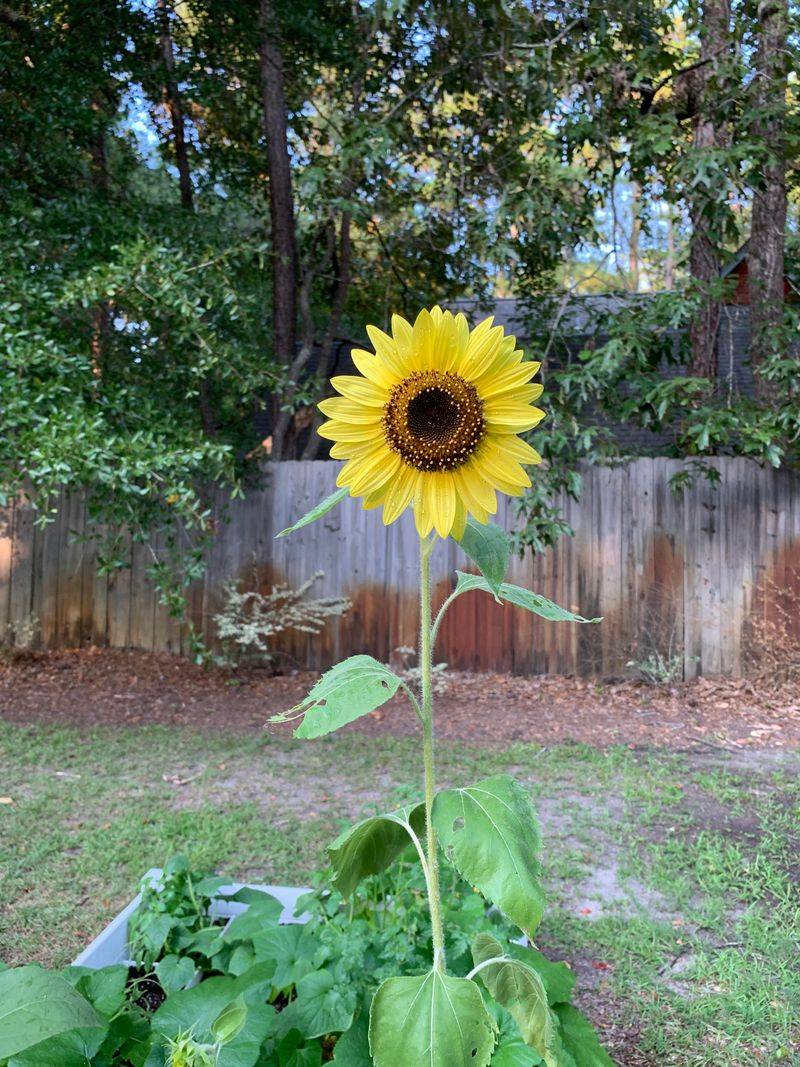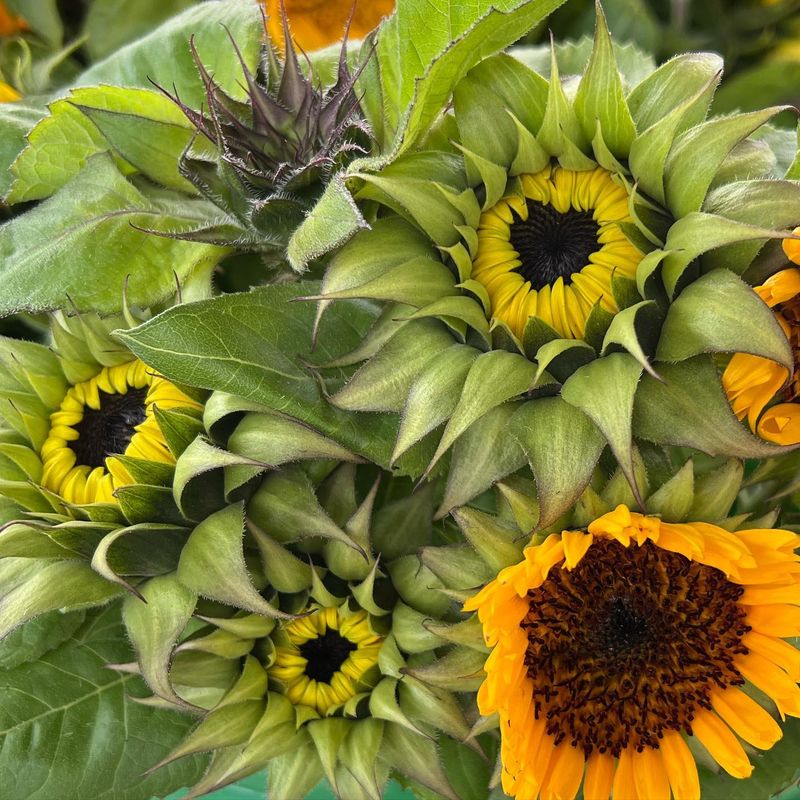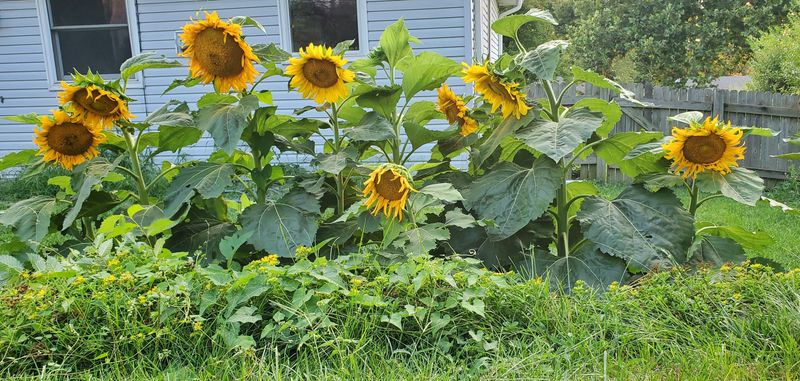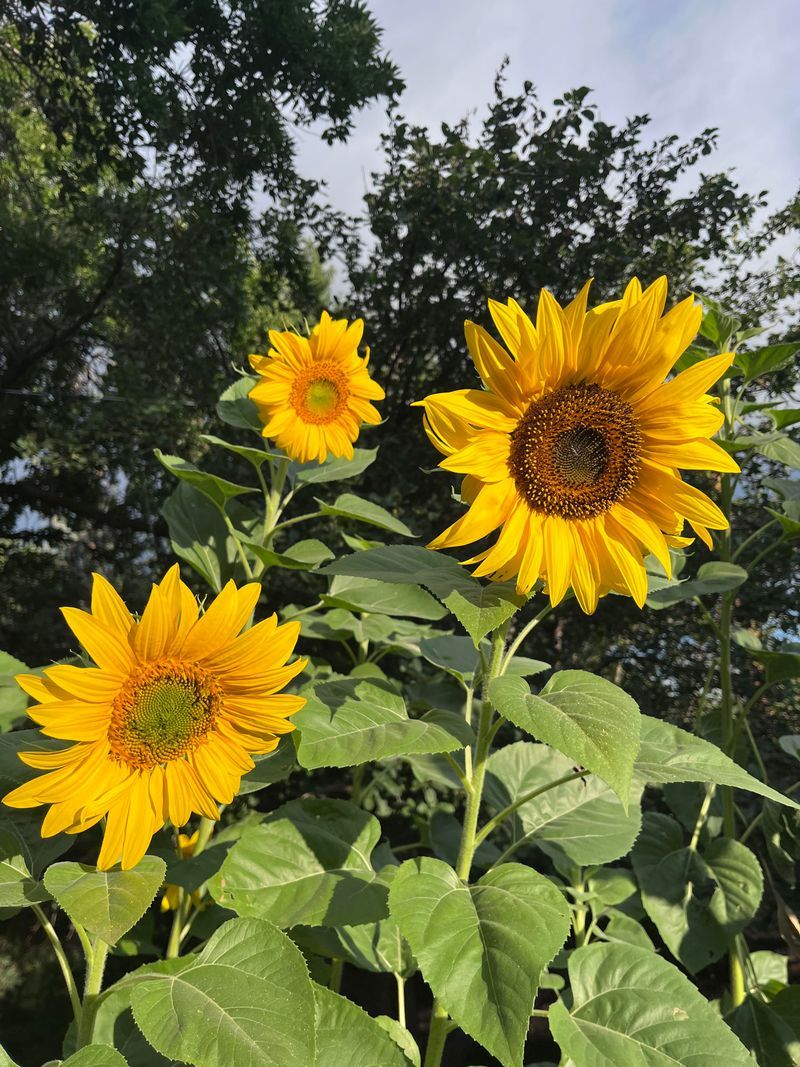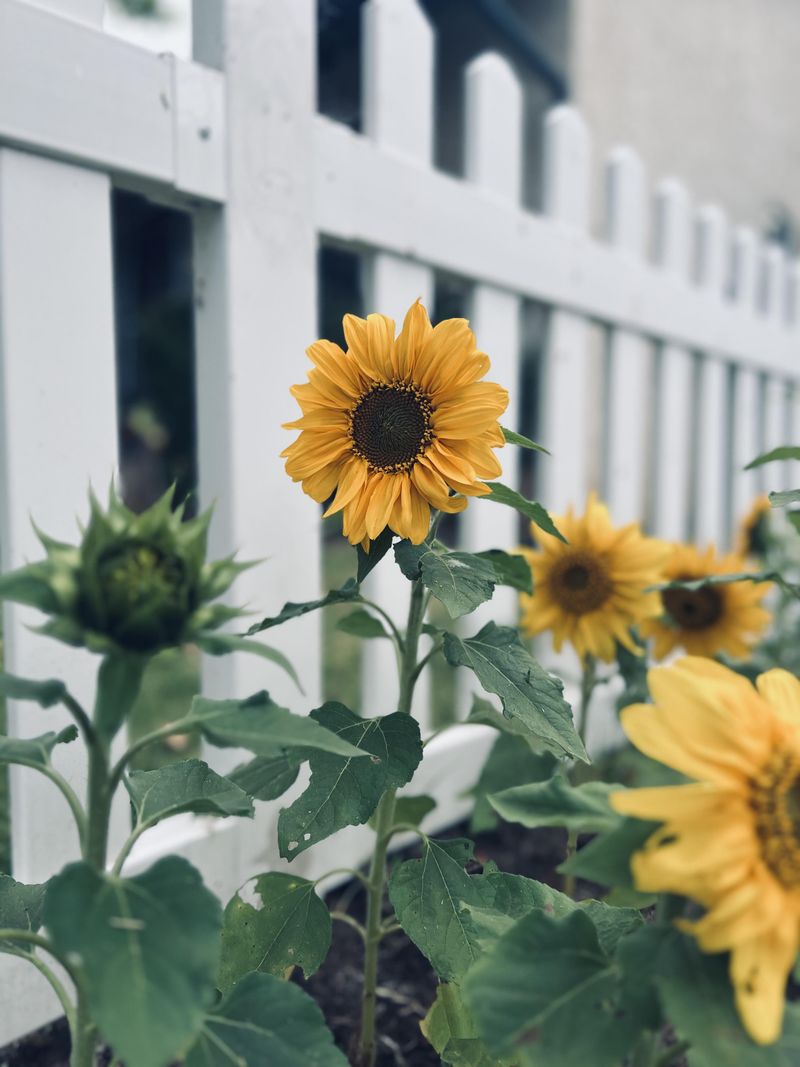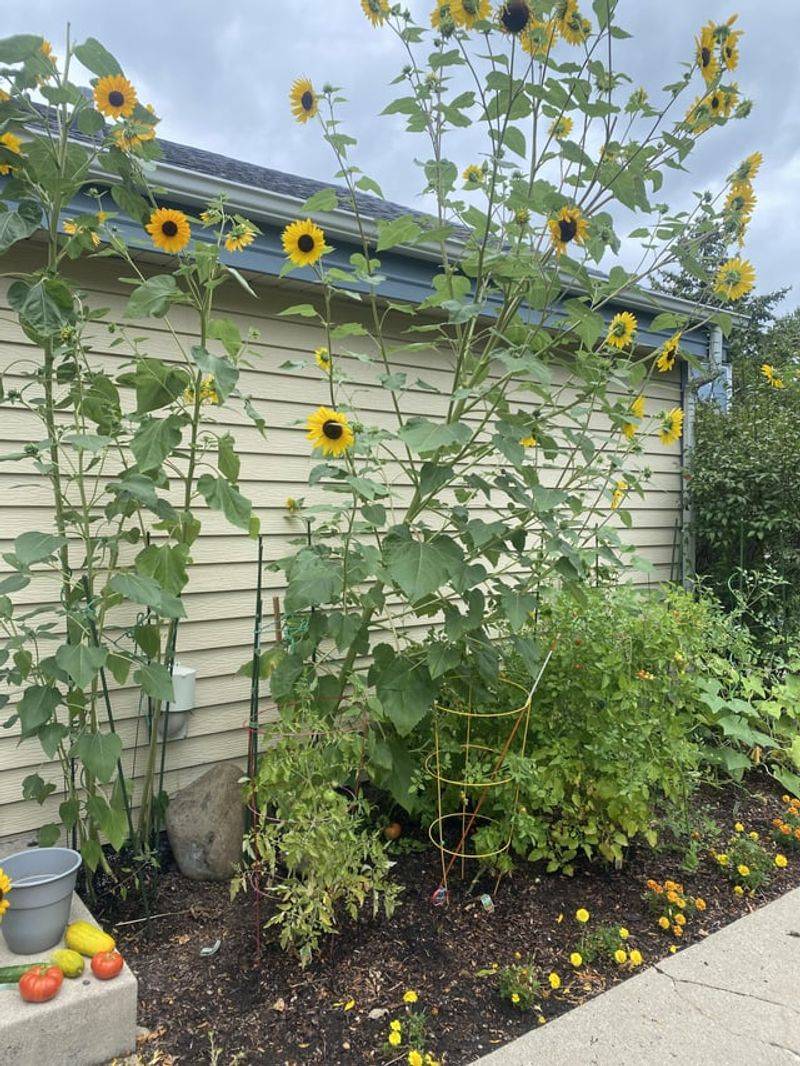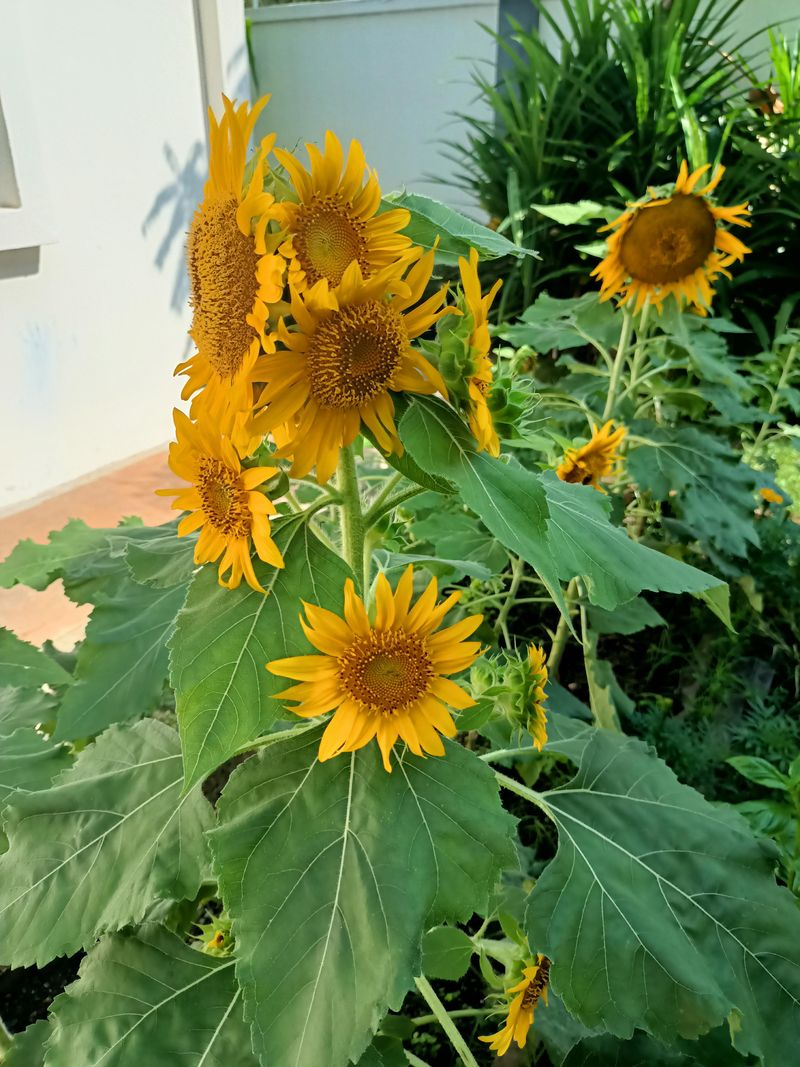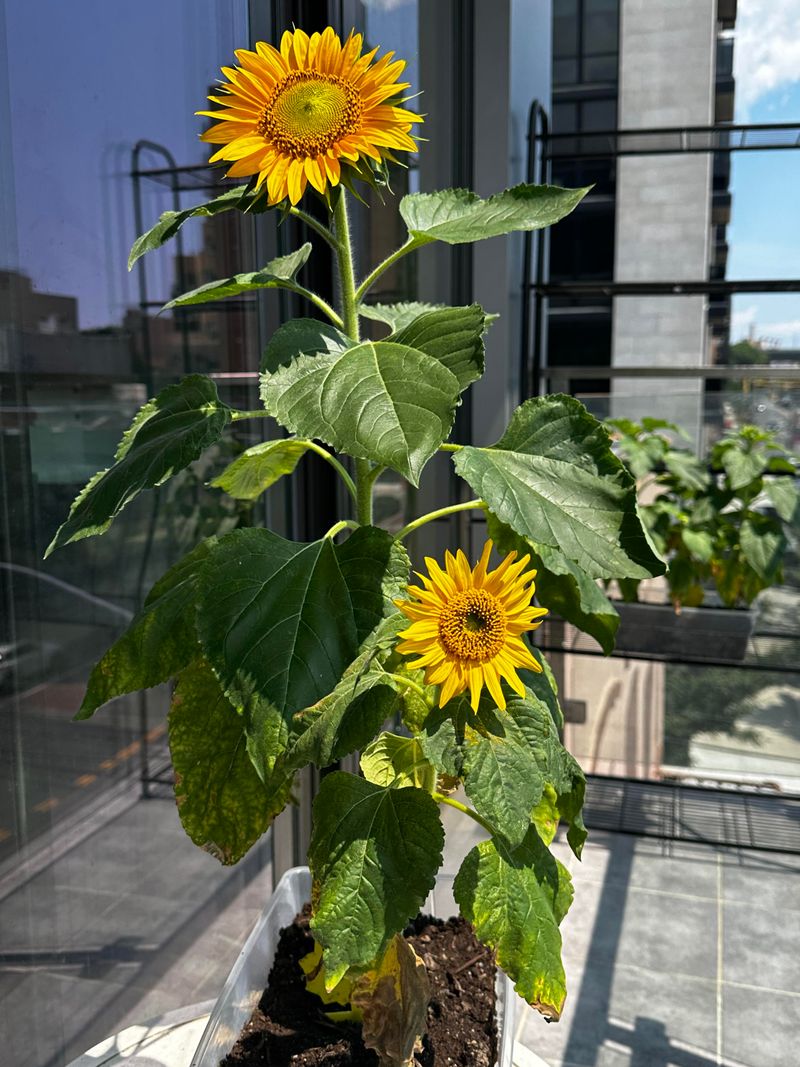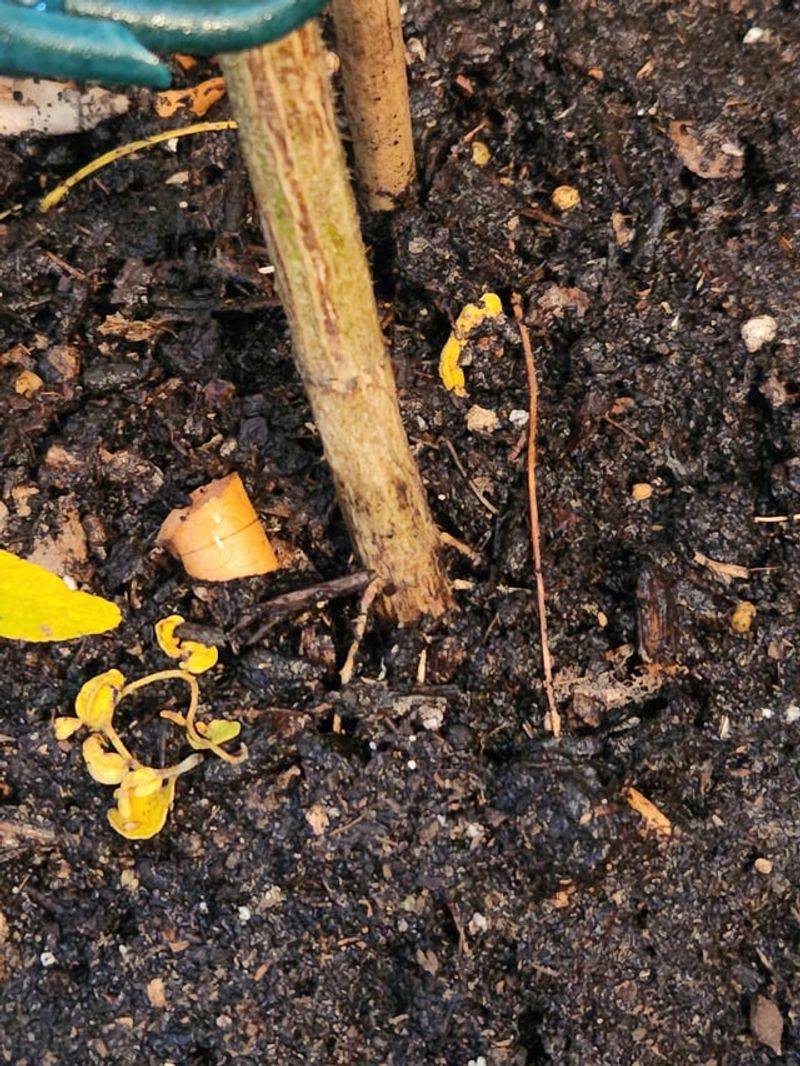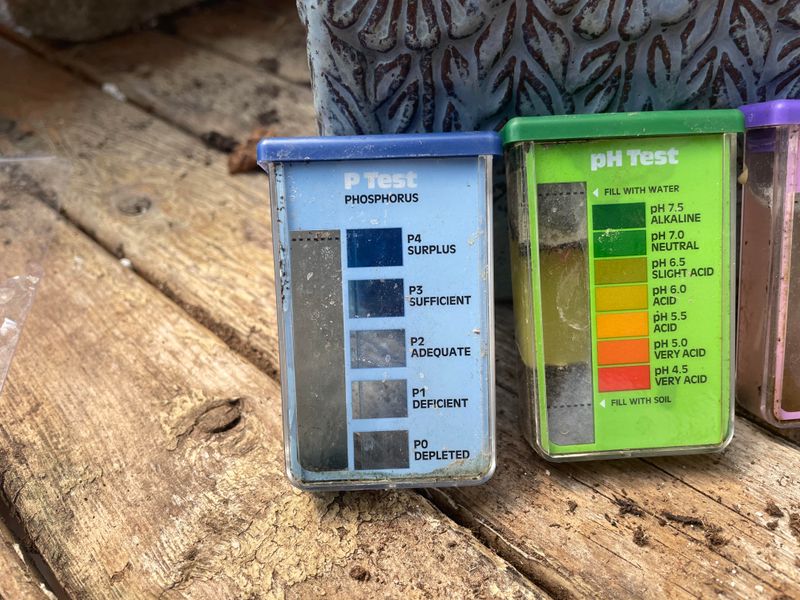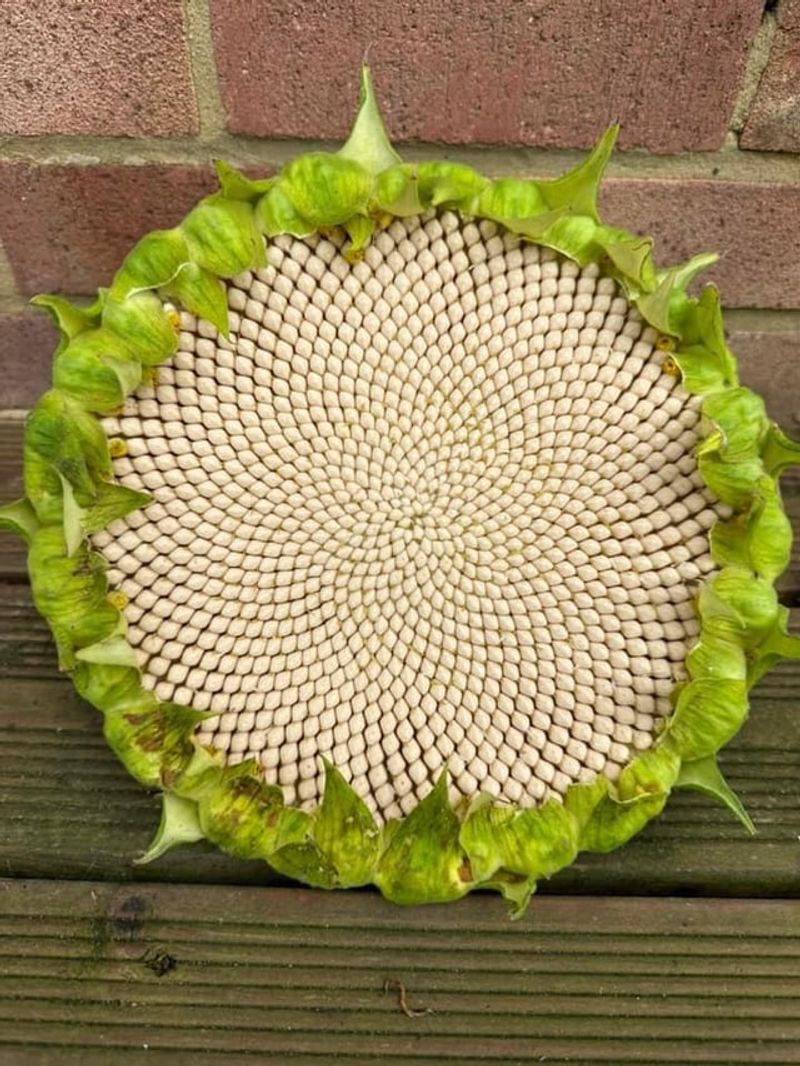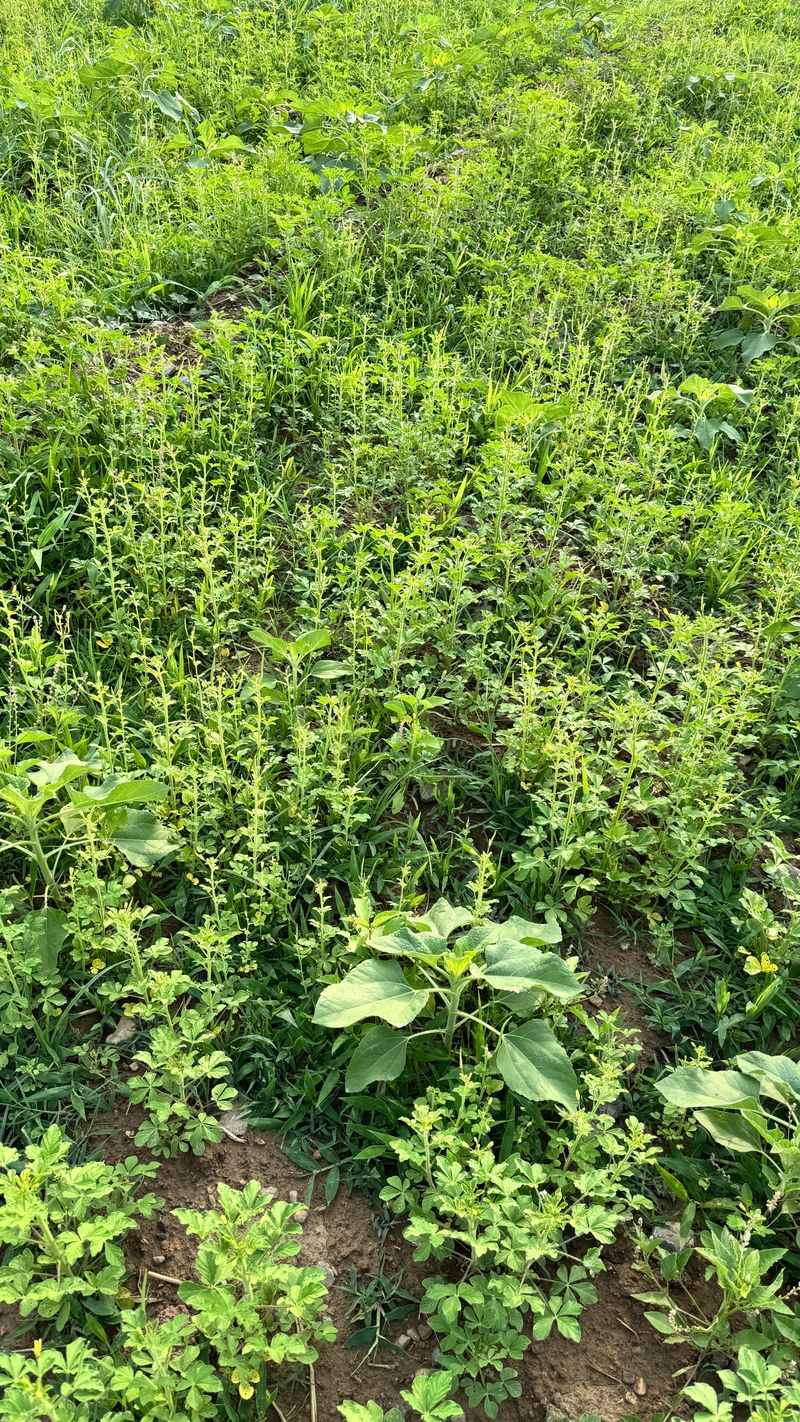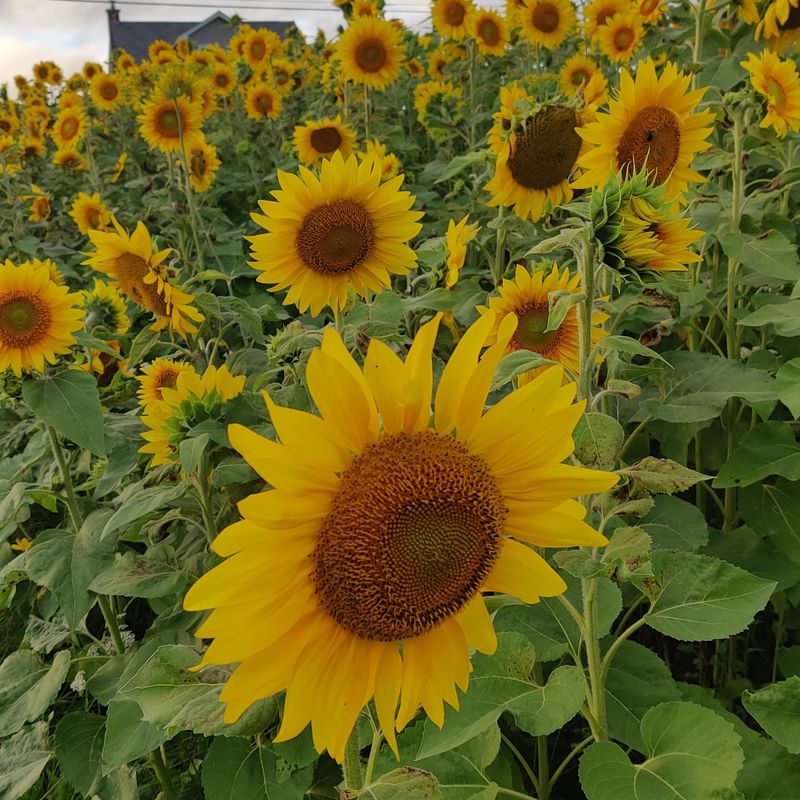Sunflowers might look tough, but they still need the right care to keep those golden heads shining strong.
These 15 tips will help stretch their blooming time and keep your garden glowing. From smart watering habits to knowing when to pinch or prune, a few small tweaks can make a big difference. Skip the common mistakes that can leave them drooping way too soon.
Let’s get into what helps sunflowers thrive and what to avoid if you want them standing tall.
1. Choose the right varieties
Not all golden beauties are created equal when it comes to blooming duration! Some varieties naturally flower for extended periods, giving you more bang for your buck in the garden. Branching sunflowers like ‘Autumn Beauty’ or ‘Soraya’ produce multiple blooms per plant.
The key difference lies in their growth habit. While single-stem varieties give you one spectacular show, branching types continue producing new flower buds for weeks. Consider planting a mix of early, mid, and late-season varieties to create a continuous parade of sunshine in your garden.
2. Plant in succession
Smart gardeners know the secret to continuous blooms throughout the season. By staggering your planting dates every 2-3 weeks from spring through early summer, you’ll create waves of sunflowers that mature at different times.
This technique prevents the disappointment of having all your sunflowers bloom and fade simultaneously. The last succession can be planted about 60-90 days before your first expected frost date. Remember that later plantings may produce somewhat smaller flowers, but they’ll still provide plenty of garden cheer.
3. Provide proper spacing
Crowded gardens might seem lush, but they create competition that stunts bloom production. Giving each sunflower enough elbow room ensures they receive adequate nutrients, water, and sunlight to produce their best flowers.
Most varieties need at least 18-24 inches between plants, while giant types require 3 feet or more. Proper spacing also improves air circulation, reducing fungal disease risks that can cut blooming short. When plants can breathe freely and access all the resources they need, they’ll reward you with more abundant, longer-lasting blooms.
4. Water deeply but infrequently
Moisture management makes all the difference between short-lived and extended blooming periods. Deep, thorough watering encourages roots to grow downward, creating drought-resistant plants that flower longer.
The ideal approach involves soaking the soil around your sunflowers once or twice weekly rather than providing daily sprinkles. This method trains sunflowers to develop robust root systems that support extended blooming. During flowering, consistent moisture becomes especially critical – water stress at this stage can cause premature bloom decline.
5. Fertilize appropriately
Finding the perfect balance of nutrients can transform your sunflower display from ordinary to extraordinary. Too much nitrogen creates lush foliage at the expense of flowers, while appropriate phosphorus levels encourage abundant blooming.
Before planting, incorporate a balanced organic fertilizer into your soil. Once flower buds begin forming, switch to a bloom-boosting formula with higher phosphorus content (the middle number in fertilizer ratios). Organic options like bone meal or a 5-10-5 fertilizer work wonderfully to extend the flowering phase without forcing growth that weakens stems.
6. Deadhead regularly
Removing spent blooms before they set seed might seem counterintuitive, but it’s one of the most effective ways to extend flowering. Plants naturally direct their energy toward seed production once flowers are pollinated, essentially considering their life mission complete.
By snipping off faded flowers just below the flower head, you’re sending a signal to produce more blooms. This works especially well with branching varieties, which can continue flowering for weeks longer with regular deadheading. Keep pruning shears handy and make this a part of your garden routine every few days during peak season.
7. Provide support for tall varieties
Unexpected summer storms can devastate your sunflower display in minutes without proper support. When stems bend or break, nutrient flow is compromised, cutting bloom time dramatically short.
Installing stakes or cages early in the growing season prevents damage before it occurs. Place supports when plants are about 1 foot tall, positioning them on the north side to avoid shading. Loosely secure stems with soft garden twine, creating a figure-eight pattern between plant and stake to prevent stem damage as they grow and sway in the breeze.
8. Mulch to retain moisture
Consistent soil conditions create the foundation for extended blooming periods. A 2-3 inch layer of organic mulch around your sunflowers helps maintain even soil moisture while suppressing weeds that compete for nutrients.
Straw, shredded leaves, or wood chips make excellent choices for sunflower beds. Beyond moisture retention, mulch moderates soil temperature fluctuations that can stress plants and shorten flowering. As organic mulches break down, they also improve soil structure and feed beneficial microorganisms that support plant health from the roots up.
9. Protect from pests
Tiny invaders can sabotage your sunflower display before it reaches its full potential. Aphids, Japanese beetles, and sunflower moths are common culprits that damage stems, leaves, and developing flower buds.
Regular inspection of your plants allows for early intervention when pest populations are still manageable. Introducing beneficial insects like ladybugs or lacewings provides natural control without harsh chemicals. For persistent problems, neem oil offers an organic solution that preserves the pollinators essential to sunflower health while deterring the pests that shorten bloom time.
10. Choose optimal planting locations
Strategic placement can add weeks to your sunflower’s blooming period. These sun-lovers perform best with 6-8 hours of direct sunlight daily, but afternoon shade in hot climates can prevent heat stress that accelerates bloom decline.
Consider the microclimate variations within your garden when selecting spots. Areas with protection from strong winds help prevent stem damage and premature petal drop. Planting against a south-facing wall creates a warm pocket that extends the growing season at both ends, allowing for earlier planting and later blooming.
11. Avoid overhead watering
Keeping foliage dry dramatically extends flower longevity by preventing fungal and bacterial issues. Wet leaves create the perfect environment for diseases that can quickly spread through your sunflower patch.
Direct water at the soil level using soaker hoses, drip irrigation, or careful hand watering. Morning watering gives any accidentally splashed leaves time to dry before evening, reducing disease risk. This approach not only preserves blooms longer but also conserves water by delivering moisture directly to the roots where it’s needed most.
12. Maintain proper soil pH
Balanced soil chemistry creates the foundation for extended flowering periods. Sunflowers thrive in slightly acidic to neutral soil with a pH between 6.0 and 7.5, where nutrients remain most accessible to their roots.
Testing your soil before planting allows you to make necessary amendments. Add agricultural lime to raise pH if your soil is too acidic, or incorporate sulfur to lower it if it’s too alkaline. Well-balanced soil enables sunflowers to access the full spectrum of nutrients they need to maintain robust blooming for the maximum possible duration.
13. Prevent seed formation
Nature’s programming directs a plant’s energy toward seed production once pollination occurs. When you’re growing for flowers rather than seeds, covering developing flower heads with lightweight mesh bags after pollination prevents birds and insects from completing the seed formation process.
This intervention keeps the plant in production mode rather than allowing it to switch to seed maturation. For branching varieties, this technique encourages the plant to continue producing new flower buds instead of diverting resources to maturing seeds. Remove the bags periodically to check for any disease issues that might develop in the enclosed environment.
14. Avoid root disturbance
Gentle cultivation practices preserve the delicate root systems that fuel continuous blooming. Sunflowers develop deep taproots that can be easily damaged by aggressive weeding or soil disturbance around established plants.
Hand pull weeds carefully near sunflower stems or use a light layer of additional mulch to suppress new weed growth. When planting sunflowers from transplants, handle the root ball minimally and avoid breaking the taproot. Direct-sown seeds generally produce plants with stronger root systems that support longer blooming periods, making this the preferred method for many gardeners.
15. Never cut the main stem
Preserving the plant’s central highway for nutrients ensures continuous flower production. The main stem contains vital vascular tissue that transports water and nutrients from roots to developing flower buds throughout the plant.
When harvesting flowers from branching varieties, cut side stems at a 45-degree angle just above a leaf node, which stimulates new growth. Cutting the main stem, however, severely limits the plant’s ability to support remaining buds. This is especially important for branching sunflower varieties where maintaining the integrity of the main stem allows for weeks of additional blooms.


